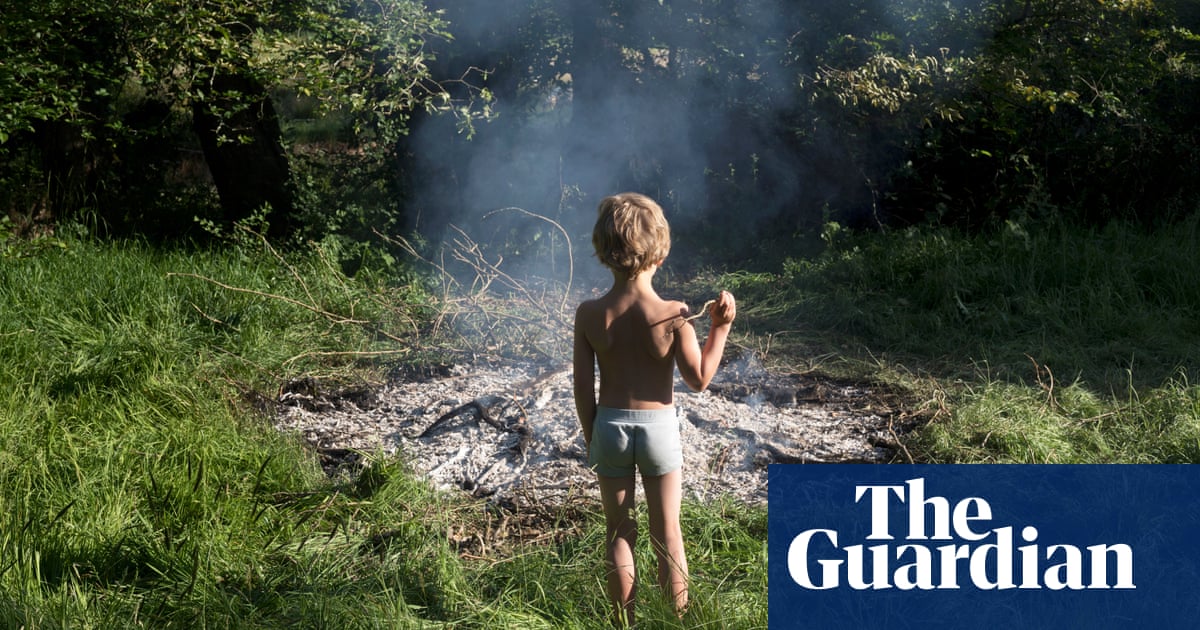
I’ve been taking photographs in Quinamayó in west Colombia for around six years now, for a project about the town’s Black Baby Jesus celebrations. Quinamayó is what is known in Colombia as a palenque, a community founded by enslaved people who fled the country’s haciendas before slavery was abolished in the 1850s. These people had not been allowed to preserve their African cultural beliefs – nor to participate in the most important Catholic events, even though they had been forced to convert to Catholicism. So in Quinamayó they decided to perform their own version of Christmas, 45 days after the traditional date – the same number of days the Virgin Mary is said to have rested after the birth. The celebration still takes place every year in mid-February.
It lasts four days, with the second day devoted to a procession centring on a wooden figure of Black Baby Jesus, which is paraded around the town. Children dress up as biblical characters and people dance to a local variation of the juga rhythm, which in Quinamayó is performed by a brass band. Dancers shuffle their feet as a reference to their forebears, with chains around their ankles.
Three days after I’d photographed this year’s celebration, the director of Quinamayó’s juga band messaged me to say a child had died in the town and a bunde was going to take place that night. That’s a ritual in which a child up to the age of 10 is both mourned and celebrated – the tradition dates back to a time when the passing of children was seen as a release from the suffering of slavery. It was something I hadn’t witnessed before. Quinamayó is an hour and a half from my home by car, so I set out immediately.
Everyone in the neighbourhood is invited to a bunde. There’s a rule you have to respect if you are going to take part, even as a singer or dancer or a member of the band – and that rule is that you cannot go home before the child is buried at midnight. If you try to leave before the end, their spirit will chase you, forcing you to return. According to what I was told, the ghost will take the form of an animal, an insect, a butterfly, a sound, or an invisible hand that will come to fetch you.
According to these Afro-Colombian communities, children who die younger than 10 are completely free of sin
For the people of Quinamayó, life begins at the moment of conception, and the baby being celebrated in this bunde had been lost due to miscarriage four months before her due date. Her mother Jessica wasn’t well enough to be present – she stayed inside her house, the building in the photograph. Other members of her family took part. Some of the children you can see filming on their phones in the background are Jessica’s cousins and nephews, and the two women – Mónica Carabalí and Nazly Paola Ramos – are friends of the family. The baby, referred to by many as angelito (little angel), was named Zoe Fernanda Camacho Aranda, and it is her tiny burial casket they’re dancing in front of.
According to the Afro-Colombian communities who practise these celebrations, children who die before the age of 10 are completely free of sin, as opposed to the usual Catholic belief that we inherit original sin at birth. The little angel on the banner behind the casket represents Zoe and was drawn by family members. She looks happy. If you look very closely you’ll also see that the only photographic materials relating to the life of Zoe have been stuck underneath: her antenatal scans.
Having gained the trust of the community, I was allowed generous access and witnessed the whole event – the singing and dancing at the start, and the coffin being carried to the cemetery where children surrounded it with candles, before people said their last words and Zoe was buried.
Racism is a structural problem throughout the country and Afro-Colombian customs are sometimes exoticised, but celebrations such as Black Baby Jesus and this bunde should be recognised as being part of Colombia’s national cultural heritage. I have come to admire Quinamayó as an example of Afro resilience, and want people who see my photographs to feel that same sense of admiration.
Jair F Coll’s CV
Born: Cali, Colombia, 1997
Trained: Universidad Autónoma de Occidente, Colombia
Influences: “Luisa Dörr, Richard Rinaldi, Johis Alarcón, Juanita Escobar”
High point: “The two and a half years I’ve been working as a freelance photographer for the New York Times, Bloomberg, Reuters and the UN”
Low point: “Not having enough courage to quit an earlier job that wasn’t meant for storytelling”
Top tip: “Find a personal project and a mentor. The first is vital for building your vision as an author. The second, to challenge the ways you portray the world”












